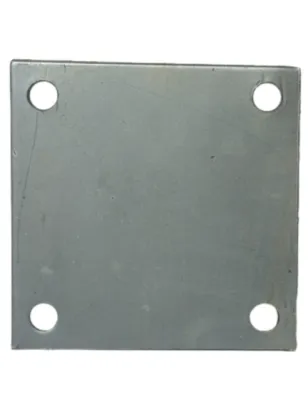loading...
- No. 9, Xingyuan South Street, Dongwaihuan Road, Zaoqiang County, Hengshui, Hebei, China
- admin@zjcomposites.com
- +86 15097380338
- Welcome to visit our website!
Exploring Structural Profiles and Their Impacts on Design and Performance
Understanding Structural Profiles A Comprehensive Overview
Structural profiles are essential components used widely in engineering, architecture, and construction. These profiles refer to the shapes and sizes of structural materials such as steel, aluminum, and other metals, which are shaped into specific cross-sectional forms to provide strength, support, and stability to structures. By understanding the various types and applications of structural profiles, we can appreciate their significance in modern construction and engineering practices.
Types of Structural Profiles
Structural profiles come in various shapes and forms, each designed to serve specific functions within a building or structure. The most common types include
1. I-Beams One of the most widely used structural profiles, I-beams, also known as H-beams, are characterized by their I cross-section. This design offers excellent strength-to-weight ratios, making them ideal for building frames and bridges. I-beams efficiently handle bending forces and are used extensively in high-rise buildings.
2. C-Channels C-channels, or U-beams, resemble a C shape when viewed in cross-section. They are used in applications that require light to medium weight support. These profiles are commonly employed as purlins in roof structures and as supports for walkways and platforms.
3. T-Beams As the name suggests, T-beams are shaped like the letter T. They are frequently used in construction for floor systems, particularly in reinforced concrete structures, contributing to maximum load-bearing capacity and stability.
4. Square and Rectangular Tubes Tubular profiles, including square and rectangular tubes, provide high strength and rigidity, making them suitable for a variety of applications, including furniture, greenhouses, and trailers. Their hollow structure allows for ease of assembly and transport.
5. Angles Angle profiles, typically categorized as equal or unequal angles based on their leg lengths, offer versatility in construction. They are often used for bracing and framing and can be easily welded or bolted to other components.
structural profiles

Applications of Structural Profiles
The versatility of structural profiles makes them applicable in numerous fields. In civil engineering, they form the backbone of infrastructures, such as bridges, buildings, and tunnels. For example, large I-beams are foundational elements in skyscrapers, ensuring they withstand wind loads and other environmental influences. Similarly, C-channels are effective in railway bridges, where weight distribution is crucial.
In residential construction, structural profiles play a significant role in framing houses. Contractors utilize a variety of profiles to create the skeleton of a home, ensuring it meets safety standards and building codes while optimizing costs. Additionally, angle profiles are often used for support structures, such as scaffolding.
Another notable application of structural profiles is in the manufacturing of furniture and fixtures. The sleek design of square and rectangular tubes has led to their use in the creation of modern furniture, providing both aesthetic appeal and structural integrity.
Manufacturing and Standards
The manufacturing of structural profiles involves several processes, including extrusion, rolling, and welding. Depending on the material and intended use, profiles can be produced in various grades and finishes. Structural steel, for example, is often galvanized or coated to prevent corrosion and enhance longevity.
Standards and regulations govern the use of structural profiles to ensure safety and reliability. Organizations such as the American Institute of Steel Construction (AISC) and the European Committee for Standardization (CEN) provide guidelines that manufacturers and builders must adhere to, ensuring quality and durability.
Conclusion
In summary, structural profiles are a fundamental aspect of construction and engineering, providing the necessary support and strength to a variety of structures. Their diverse shapes and applications, coupled with stringent manufacturing standards, highlight their importance in creating safe, efficient, and aesthetically pleasing buildings. As technology advances and design demands evolve, the development of new structural profiles will undoubtedly continue, shaping the landscapes of our future urban environments. Understanding these elements can significantly impact how we approach architecture and construction, paving the way for innovative solutions and designs.
-
The Rise of FRP Profiles: Strong, Lightweight, and Built to LastNewsJul.14,2025
-
SMC Panel Tanks: A Modern Water Storage Solution for All EnvironmentsNewsJul.14,2025
-
GRP Grating: A Modern Solution for Safe and Durable Access SystemsNewsJul.14,2025
-
Galvanized Steel Water Tanks: Durable, Reliable, and Ready for UseNewsJul.14,2025
-
FRP Mini Mesh Grating: The Safer, Smarter Flooring SolutionNewsJul.14,2025
-
Exploring FRP Vessels: Durable Solutions for Modern Fluid HandlingNewsJul.14,2025
-
GRP Structures: The Future of Lightweight, High-Performance EngineeringNewsJun.20,2025
